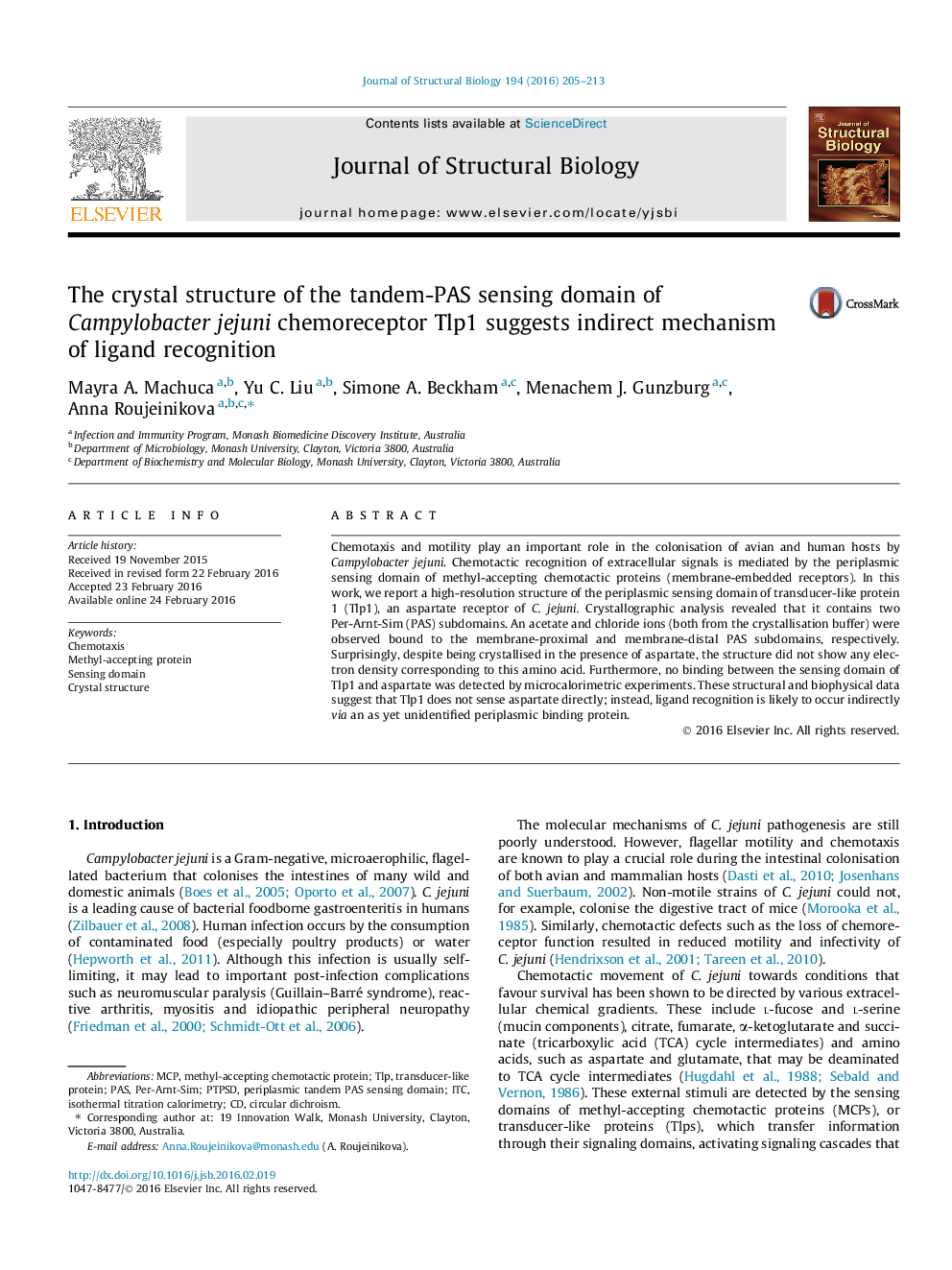| Article ID | Journal | Published Year | Pages | File Type |
|---|---|---|---|---|
| 5913782 | Journal of Structural Biology | 2016 | 9 Pages |
Chemotaxis and motility play an important role in the colonisation of avian and human hosts by Campylobacter jejuni. Chemotactic recognition of extracellular signals is mediated by the periplasmic sensing domain of methyl-accepting chemotactic proteins (membrane-embedded receptors). In this work, we report a high-resolution structure of the periplasmic sensing domain of transducer-like protein 1 (Tlp1), an aspartate receptor of C. jejuni. Crystallographic analysis revealed that it contains two Per-Arnt-Sim (PAS) subdomains. An acetate and chloride ions (both from the crystallisation buffer) were observed bound to the membrane-proximal and membrane-distal PAS subdomains, respectively. Surprisingly, despite being crystallised in the presence of aspartate, the structure did not show any electron density corresponding to this amino acid. Furthermore, no binding between the sensing domain of Tlp1 and aspartate was detected by microcalorimetric experiments. These structural and biophysical data suggest that Tlp1 does not sense aspartate directly; instead, ligand recognition is likely to occur indirectly via an as yet unidentified periplasmic binding protein.
